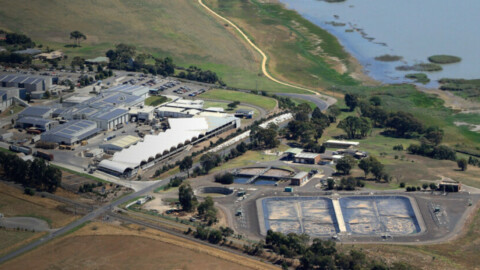In this case study from the NSW Department of Planning, Industry and Environment, DP Ag, a cotton farm in Moree replaced its old diesel guzzling irrigation system with a much more efficient and reliable solar-diesel hybrid that uses less than half the diesel of our old system. DP Ag Director, John Mulligan, talks about the project and the energy savings realised.
About us
DP Ag is a family-run farming business producing fine grade cotton from a 200 hectare site in Moree, NSW. We’ve been growing cotton since 1978, producing around 400 tonnes of lint a year. We market our cotton to merchants in Australia who then on-sell overseas, to China and other markets.
Our situation
Cotton, being a desert plant, is more drought and heat tolerant than many other crops. It uses about the same amount of water as most other summer crops, and less water than rice, maize and many vegetable crops.
At our farm, rainfall is supplemented by irrigation. We have a diesel irrigation pump which operates whenever rainfall is low, and around the clock during the hot dry months between October and February.
The pump uses more than 67,500 litres of diesel fuel per year and because of the high cost of diesel, we had to look at ways to reduce the cost.

What we did
With the support of the NSW Government and assistance from our consultant, we upgraded our traditional diesel engine irrigation pumping system to an off-grid solar-diesel hybrid power plant.
This means that during the day the pump is powered by solar energy when sunny, and diesel at night and when it’s cloudy.
The system consists of a diesel generator, a pump motor and a 70 kilowatt solar power system. The solar power system is a ground mounted solar array, located in an optimum location on the farm for maximum solar gathering.
The upgrade also included an energy management control system with a variable speed drive to better regulate the pump motor’s power needs – particularly outside of peak periods, ensuring that it doesn’t run at full speed when the demand is low.
The control system manages the diesel generator, solar power system, variable speed drives output and the fuel supply.
We’ve reduced our diesel consumption by 60 per cent, saving us more than $46,000 a year
John Mulligan, Director DP Ag Pty Ltd
The results
The new pumping system is saving us on average more than 40,000 litres of diesel annually, representing a 60 per cent saving. That’s around $46,500 in savings per year.
The system gives us energy savings even when we are pumping water 24/7 in the peak use season between October and February.
The multiple sensors and computer modem communications lets us monitor and control it remotely, meaning we don’t have to go to the site in the middle of cold nights or on wet days.
We also use water more efficiently now. The systems lets us extract water consistently over the course of the year, reducing water level draw down during dry periods when demand for water is at its peak.

By the numbers
- Cost of upgrade: $180,589
- Estimated cost savings: $46,500 a year
- Fuel savings: 40,760 litres of diesel (60 per cent of existing annual consumption)
- Simple payback: Less than four years
The technologies
Solar-diesel hybrid power plant
Solar power systems that convert sunlight into energy can be integrated with existing diesel-powered systems.
Also known as photovoltaics, these electronically-controlled systems can operate remotely, around the clock in ‘hybrid’ mode and in ‘solar-only’ mode during the day.
Variable speed drives
When a single pump is required to operate over a range of flow rates and pressures, such as in irrigation, standard procedure is to design the pump to meet the greatest output demand of both flow and pressure.
For this reason, pumps are often oversized and they will be operating inefficiently over a range of duties.
This common situation presents an opportunity to reduce energy
requirements by using control methods such as a variable
speed drive.
By installing a variable speed drive to an irrigation pump motor, the frequency of the electrical power supply can be regulated to match the irrigation volume or pressure requirements.


















